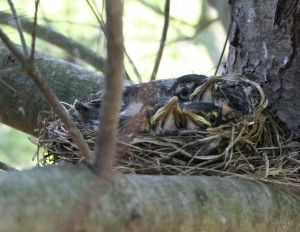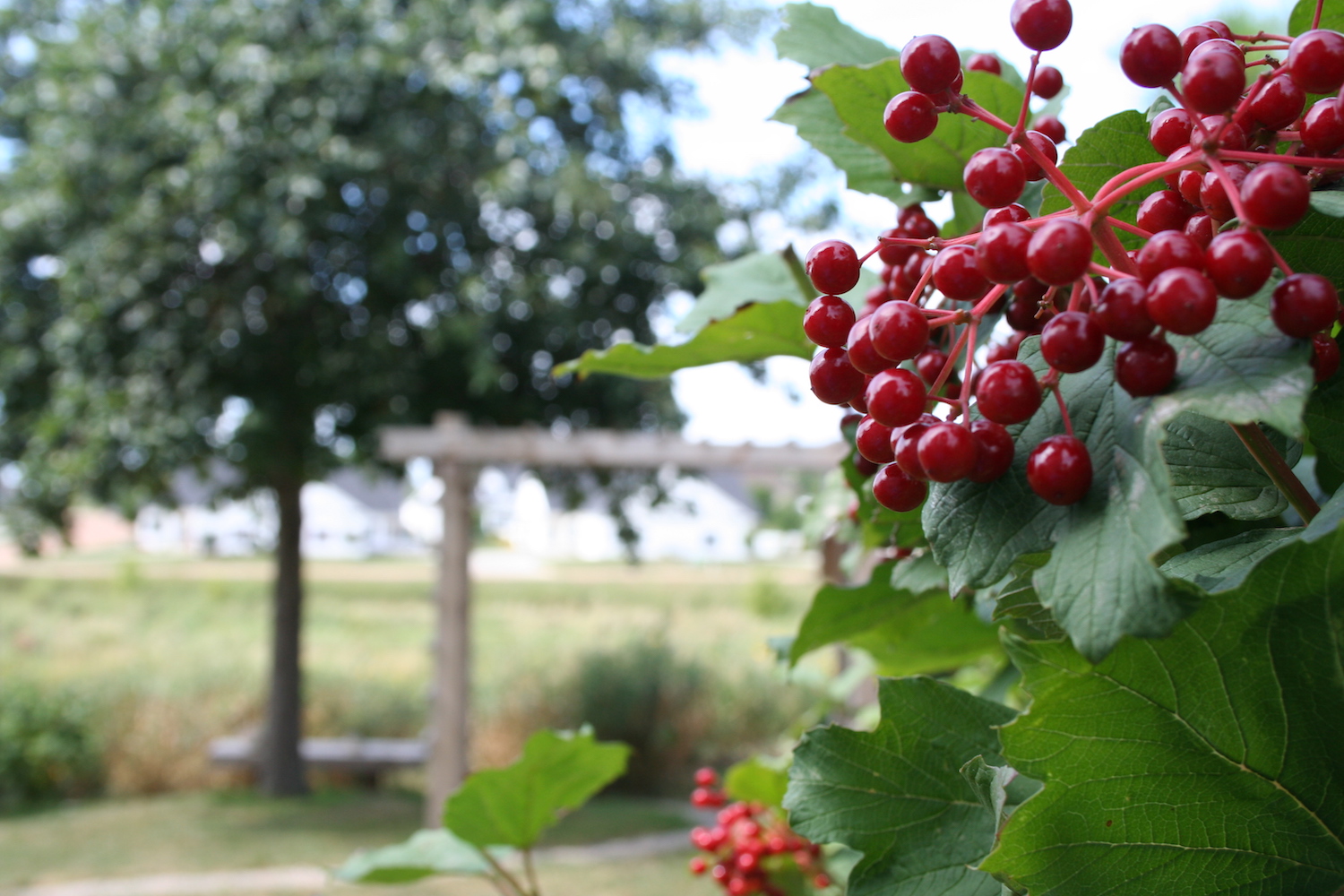I was putting some mulch under our white pine Sunday when I noticed that the robin who had been around our yard lately seemed to be hanging quite close to me. Soon, I discovered the reason why — a nestful of almost ready to fly baby robins. The parent robins built the nest in the crotch of the pine, which would provide some protection from predators and the considerable wind we have in the spring.
If you like birds, planting “shrubby” trees and bushes almost guarantees you will get nests. In the past, we’ve had nests in highbush cranberry, pagoda dogwood, ash trees and (unfortunately!) an air exchange pipe coming out of our house. (We had to evict those birds, I’m afraid.)
Birds are fairly easy to attract to your yard. They require only four basic things: water, food, shelter and cover.
For water, a bird bath or, even better, a water feature with moving water easily meets the first requirement. The best bird baths are no more than 3 inches deep and are kept filled with fresh water – daily filling is best and it’s a good idea to clean your bird baths frequently. Moving water or a fountain or sprinkler will attract even more birds, and hummingbirds especially like falling water because they bathe in mid-flight.
While feeders are a good way to attract birds, providing natural food for them in abundance is even better. Plants that bear fruits or seeds will provide food for many kinds of birds. Good choices for our area include high bush cranberry, serviceberry, arrowood, blueberry, sunflowers, native grasses, coneflowers, liatris, pine and yew. Leave plants with seeds standing during the winter to provide food for the hardy birds that stay here all year. Choose native plants or cultivars of native plants whenever possible, and mulching your planting beds gives birds a place to dig around and pluck out insects to eat.
Shelter and cover can be provided by the same kinds of plants, but serve two different purposes. Birds need places to build their nests (such as shrubby trees) and raise their young, but they also need places to perch while looking for food and to hide if a predator shows up. If you have the space for it, a brush pile is guaranteed to bring in more birds.
A variety of trees and shrubs, including some that are thickety or planted in hedges, provides excellent nesting sites. Good hardy choices include lilac, sumac, dogwood and yew hedges. Make sure to include some evergreens (spruce, yew, fir, pine) for winter shelter for birds. Also, be sure to plant shrubs or trees near your bird bath or feeders, so birds can make a quick escape if the neighborhood cat shows up.
If birds are a priority for you, don’t use pesticides or herbicides – and keep your cats indoors! Organic fertilizers are also best for birds. Their bodies are so small that any ingestion of toxic chemicals can cause severe damage.
Finally, plant many of your bird attractions within easy sight of a window or favorite outdoor chair. That way, you can enjoy the birds in your bird garden.
Incorporate these four things in your yard and you’ll be surprised how many nests you get.


A great photo of the robin nest and nestlings, Mary.
Thanks, Dave! The baby birds have fledged now. Those big winds earlier this week kind of worried me, but I saw a couple of clearly young robins flying around the yard on Wednesday, so I think at least a couple of them made it. Now I’ll watch to see if the robins try to raise another batch in the same nest.